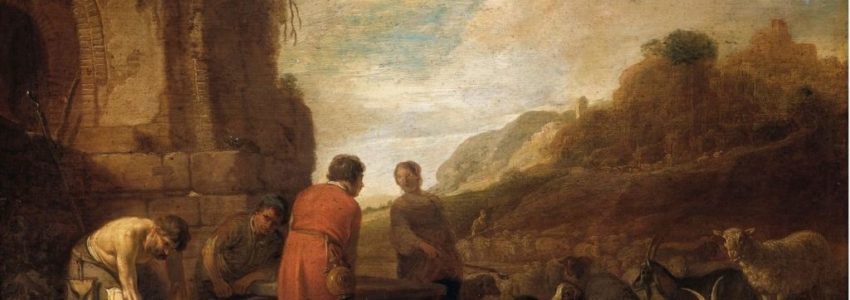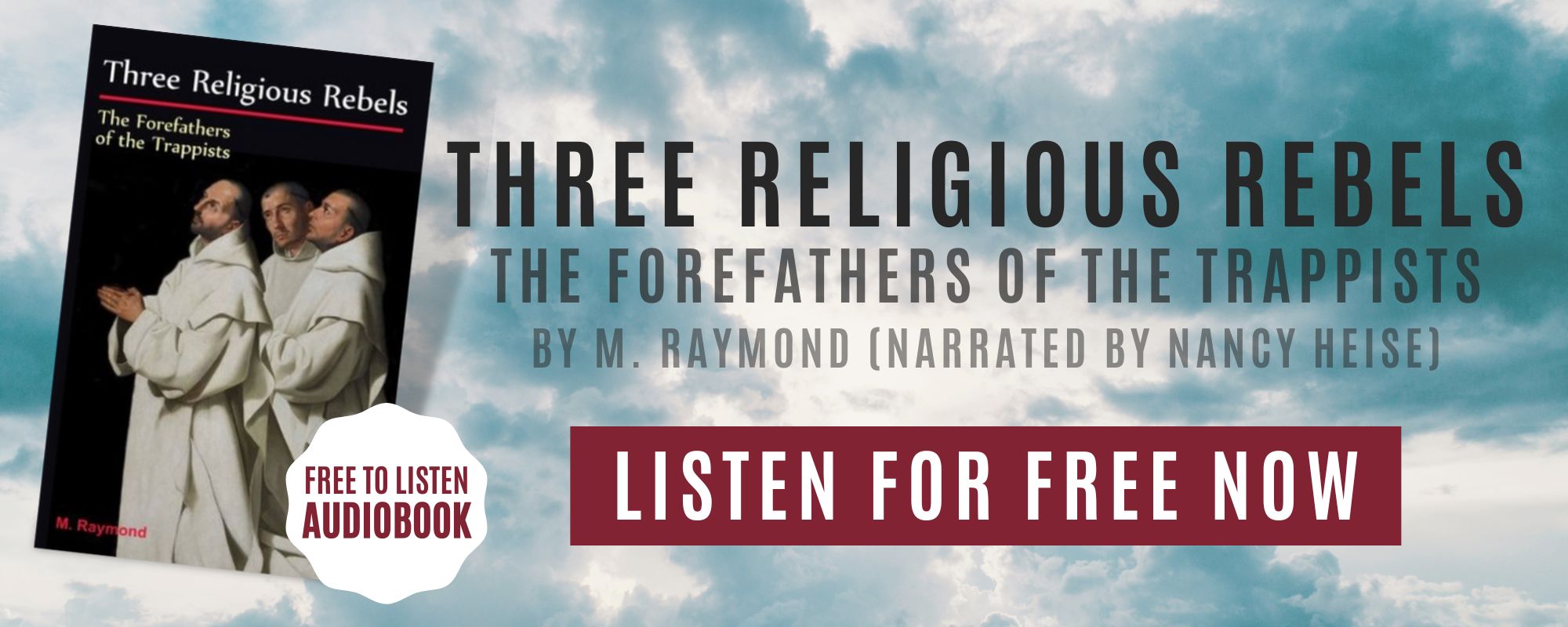Rachel in the Bible: A Story of Romance and Tragedy

Published Nov 16, 2021
The bible is full of stories of extraordinary women who showed unparalleled courage and faith in God. But the story of Rachel in the Bible stands out in that she was not brave nor pious.
Rachel was the kind of heroine who had very relatable worries. Though beautiful and loved, she was never fully secure with herself. Some would say that her story was romantic while others would argue that it’s tragic. Whatever it may be, one thing is for sure: Rachel’s story had and will continue to inspire generations.
Who was Rachel in the Bible?
Rachel was the youngest daughter of Laban and the second wife of Jacob, her cousin. She is also the mother of Joseph and Benjamin who led two of the twelve tribes of Israel. Her name means “ewe” (a female sheep) which is pretty much a giveaway of what her father did for a living.
In the Bible, Rachel was described as beautiful in form and appearance (Gen. 29:17) and the wife that Jacob loved (Gen. 29:18). In fact, in his love for her, Jacob agreed to work a total of 14 years for free just to get her hand in marriage.
But aside from being the beloved wife, Rachel is mostly known as one of the parties in the Bible’s first love triangle.
Rachel’s Story
Laban’s Duplicity
Rachel first met Jacob when she was fetching water for her father’s flock. Jacob, at that time, was fleeing from his home after tricking his father and stealing his brother’s blessing (Genesis 27).
Upon seeing Rachel, Jacob immediately rolled the huge stone from the well’s mouth and watered Laban’s flock (Gen. 29:10). That well was used by the locals to water their sheep and as you can imagine, the stone was quite heavy.
When the flock was watered, he then kissed Rachel and told her that he is the son of Rebekah, Laban’s sister (Gen. 29:11). In their culture at that time, Jacob kissing Rachel was normal as he was considered her kinsman. When Rachel heard this, she then brought Jacob to her father who was delighted to see Jacob and even convinced him to stay and work for him.
In exchange for seven years of work, Laban agreed to give Jacob her daughter Rachel as a wife (Gen. 29:15-20). Now, aside from Rachel, Laban also had another, older daughter: Leah. While Rachel was considered a beauty, Leah was described as having “weak” or “tender” eyes. There is some debate about what having “weak eyes” means in this context, but some sources say it’s tantamount to saying that she was a plain Jane.
When the seven years are up, Laban held a wedding for Rachel and Jacob. Except that, instead of Rachel, Laban had tricked Jacob into marrying Leah instead. When Jacob woke up the morning after his wedding, he discovered that he married Leah instead of his beloved Rachel.
Now, you might be wondering, how did Jacob not know that he was marrying Leah instead of Rachel?
Well, according to the customs of the time, a bride has to wear a veil throughout the whole wedding. And she needs to wear that veil up to the marriage bed and only take it off prior to the consummation of marriage. It’s safe to assume that the consummation happened at night. Since electricity wasn’t yet a thing at that time, Jacob was never able to see his bride’s face until the next morning.
The Bible didn’t mention Rachel’s reaction to the whole thing. Was she angry? heartbroken? Did she feel betrayed by her own father and sister? Did she love Jacob? We’ll never know for sure. But Rachel probably didn’t have a say in any of this. Like most women of that time, she can only acquiesce to the wishes of the men around her.
Upon learning of Laban’s duplicity, Jacob confronted him. Laban answered that “It is not so done in our country, to give the younger before the firstborn” (Gen. 29:26). He added that he will give Rachel to Jacob after a week of his marriage to Leah if he will promise to work seven more years. And so Jacob married his beloved Rachel and toiled for seven more years. In those days and in their culture, polygamy was legal and it was quite common for sisters to marry the same man.

The Sister’s Rivalry
As you might have imagined, that trick Laban pulled on Jacob’s wedding created a rivalry between the sisters. Leah may have been the first wife but it was Rachel who held Jacob’s heart.
When God sees that Leah was unloved, He blessed her with four sons. While Rachel was childless for many years – something that made her terribly envious and insecure of Leah. In those days, children, especially sons, were desired. People also think that childless women didn’t have God’s favor.
In desperation, she got angry at Jacob and told him to give her children or she will die. To which Jacob replied “Am I in the place of God, who has withheld from you the fruit of the womb?” (Gen. 30:2)
To make up for her childlessness, Rachel gave her servant Bilha as Jacob’s wife. Under ancient Hebrew law, any child that the servant bears will legally belong to Rachel. And so the servant bore Jacob two sons.
Seeing that her sister’s servant bore Jacob two sons, Leah also gave her servant Zilpah to be his wife. Her servant also bore two sons and Leah also bore two more sons and a daughter. This means that by now, Jacob has 10 sons and a daughter by Leah and the two servants. But none by Rachel.
Then God took pity on her and she became pregnant with her first son. She named him Joseph which means “may God add” – a testament to her longing for sons. Joseph would grow up to become a very important biblical figure later on.
The Flight from Laban
After Rachel gave birth to Joseph, God appeared to Jacob in a dream and told him to return to the land of his father.
And so together with his wives, servants, and children, Jacob set out to return to Canaan. He gathered all his belongings along with his animals and bid goodbye to Laban. But unknown to Jacob, Rachel also took some of Laban’s household gods with her.
Biblical scholars aren’t sure what prompted Rachel to bring those idols. It may be because she still harbors paganistic beliefs. Or maybe because those were made of valuable materials and she must have thought that it would help them in their new start in life. Whatever it was, Laban was not pleased. So he chased Jacob’s caravan.
When he caught up with them, he accused Jacob of stealing the idols. So Jacob told Laban to inspect his belongings and that whoever had them shall not live (Gen. 31:32). But Rachel cleverly hid it under the saddle she was sitting on and told her father’s men that she cannot stand up because she is having her period. The ploy worked and Laban went home empty-handed.
While on the journey, Rachel fell pregnant once again. This would be her last as she would die giving birth to this child. She called him “benoni” or son of my sorrow. But Jacob would rename him Benjamin which means “son of the right hand”.
Jacob buried his beloved Rachel on the way to Ephrath (now Bethlehem) and set up a pillar over her tomb. Her tomb is still there to this day, just a short drive from Jerusalem.
What Can We Learn From Rachel’s Story?
Rachel’s story is not only a roller-coaster ride of emotions that can rival even the highest-rated telenovelas of today. It also gives us a few life lessons that are still relatable even in the modern age.
1. Jealousy can get you nowhere.
True, Rachel had a reason to be jealous of her sister but look where it got her. For years, she lived in bitterness and spent her life trying to one-up her sister.
Sadly, I know a few people who lived like that and it ruined their life. They became bitter towards everyone that they fail to appreciate life and the people who love them. If you ask me, that’s such a waste. I mean, we only get one shot at life, and spending it hating others is just pointless.
2. God is in control
Rachel had been barren for years and she thought she was never going to have any children. But God took pity on her and made her the mother to the two tribes of Israel. Not only that, her son Joseph would play a huge role in saving Egypt and Israel during the seven-year famine.
This teaches us to trust in God’s plan and not lean on our own understanding. He knows what’s in our hearts and he knows his plans for us. Just as he did not forsake Rachel, he won’t leave you behind too.
3. Love comes with sacrifice
Just imagine: Jacob toiled for 14 years just to marry the woman he loves. That’s 14 years of back-breaking work – all for free. Will you be able to make such a sacrifice for the one you love? I bet most of us won’t. But as they say, to love is to sacrifice. If we love someone, we must be willing to give up things just to be with them.
But in this story, Jacob is not the only one who made a sacrifice. In giving her servant to her husband, Rachel proved her sacrificial love for her husband too. I mean, the thought of Jacob touching another woman must have hurt a lot. She may have done it to one-up her sister but you can’t deny that doing such takes humility and a willingness to sacrifice.
Seek a Deeper Connection with God and Join Lay Cistercians of South Florida
Lay Cistercians of South Florida, is a community of lay people who seeks to have a deeper connection with God by living a life inspired by the monks and nuns through Lay Monasticism. Learn more about what is a Lay Cistercian on our website. Anyone who aspires to do the same as us, and is a confirmed Catholic is welcome to join us! We meet every second Saturday of the month at Emmanuel Catholic Church in Delray Beach, Florida.

This Content Has Been Reviewed For Accuracy
This content has undergone comprehensive fact-checking by our dedicated team of experts. Discover additional information about the rigorous editorial standards we adhere to on our website.

About The Author
Judy Ponio is a professional writer for the Lay Cistercians blog and a devoted Catholic. She works hard to ensure her work uses accurate facts by cross checking reputable sources.




